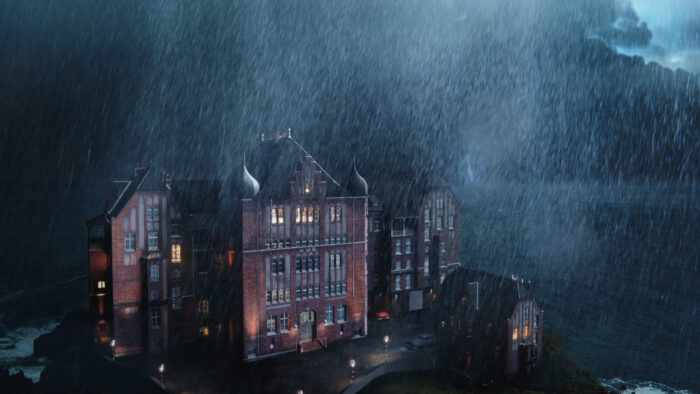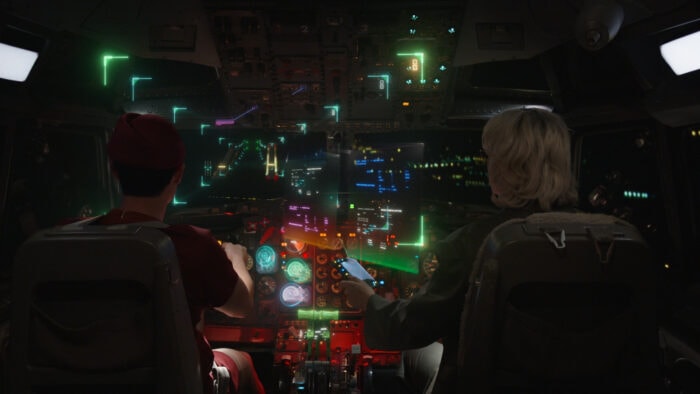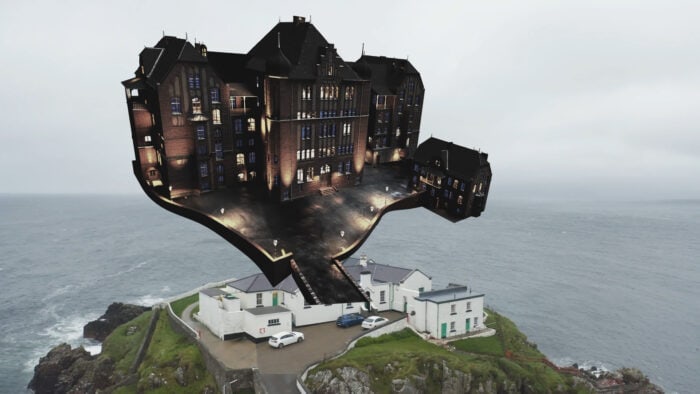Legion created over 100 digital effects for the premiere season of NBC Television Network’s new series ‘Quantum Leap,’ creator Donald P. Bellisario’s revival of the ’90s sci-fi cult classic.
Stepping in during pre-production of the first episode, the LA and B.C.-based company created a complex mix of 2D and 3D assets across the first season.
‘Quantum Leap’ picks up 30 years after time-traveler Dr. Beckett (Scott Bakula) stepped into the Quantum Leap Accelerator and disappeared as a new team restarts the project. The story follows lead physicist Dr. Ben Song (Raymond Lee) as he leaps through time and space, navigating new challenges.

Co-Founders James David Hattin, Creative Director/VFX Supervisor, and VFX Producer Nate Smalley put together a bespoke group of artists with a range of disciplines. Hattin, based at Legion’s flagship facility in Burbank, headed up the project, ensuring that everyone shared a clear creative vision.
Working seamlessly as a single unit, the studio’s team in British Columbia and LA created a wide range of shots, compositing multiple digital elements that deliver powerful imagery.
A Diverse Mix of VFX
Artists built a variety of complex computer-generated elements from the ground up, including a 747 jumbo jet, and digitally rendered skies. The team designed the aircraft’s flight control panel illuminating gages with an animated mix of vivid colors. Undulating runway lights viewed from the cockpit window provide visual cues for the nighttime landing.

Digitally constructed shots include a multi-level nuclear reactor cooling room, an asylum, high-rise buildings, a turret on a battleship, and a hologram. Set extensions replace large-scale blue screens with a digitally rendered mountain range, skies, and interior walls; matte paintings projected onto geometry 2.5D extend environments.
Dynamics augment shots with fluid simulations, rain, thunder, clouds, fire, explosions, smoke, and debris, replicating the organic look of real-world forces. Artists digitally deleted rigging, wires, and elements captured by the camera that didn’t fit with the look of specific periods.
Each episode plays out in disparate locations and points in time, from a frontier town in 1889, an exorcism in 1938, a psychiatric asylum in 1954, a test site for a nuclear reactor in 1962, a Transglobal Airlines Flight in 1971, and a battleship in 1989 – to the Quantum Leap Headquarters in LA in 2051, the ‘far future.’
New effects drive the show’s first journey to the future:
A continuum of the original ‘Quantum Leap’ premise – following time travelers to the past – the show makes its first journey to the ‘far future. Visual storytelling driven by a sequence of new effects works in tandem with the narrative to bring the new scenario to life.
Legion created a series of increasingly complex visual effects for Ben’s seminal leap to the future in the season finale, “Judgment Day.” Minutes after he finds himself amid a nuclear winter at what remains of Quantum Leap’s Headquarters, the Accelerator begins trying to pull Ben back to the past.
Digital effects visually manifest the increasing strength of the Quantum Leap Accelerator as Ben struggles to resist its force. Ian Wright, the only member of their team to survive the apocalypse, quickly tries to bring Ben up to speed on three decades leading up to the catastrophic event and what he must do to keep it from becoming a reality.

Artists began creating the new look of the ‘future’ effects by developing a ‘core’ visual asset, an overall atmosphere that engulfs Ben. Building on it, the team designed a sequence of layered effects visually representing the Accelerator’s force. The digital ripple of multiple images of Ben increases as the Quantum Leap Accelerator’s pull gets stronger.
“When I first saw the concept art, I had a vision in my head for what it should look like,” says Hattin. “I started breaking down the Avid footage and creating iterations until it started to resemble the final look prior to the final jump back to the past. We then worked backwards to build the intensity of the Accelerator’s pull on Ben over the course of two scenes.”
Legion’s 3D supervisor Blake Anderson used all the tools at his disposal in Maya to rapidly develop several moving textures that could be rendered from any angle, and work with a variety of shots.
“We were able to track the motion of Ben and apply the distortion and fractal energy that is part of the base future effect using smart vectors. Roughly match-moved geometry was used to build several fluid simulations in Houdini to create the visible energy of the Accelerator trying to claw Ben back in time,” says Hattin.
Maya-based animated textures helped finish the layering effect and give it the energy it needed visually. Artists digitally cleaned up the scene and delivered a sequence of shots that seamlessly melds the synthetic imagery with the texture and feel of the live-action footage.
Legion, currently working on season two of NBC’s hit series, works closely with the show’s VFX supervisor, Trent Smith, to develop the looks of the effects and achieve the showrunner’s vision on tight schedules.
“One of the great things about our experience working on ‘Quantum Leap’ is our relationship with Trent,” says Hattin. “He’s there through every phase of the production – providing input and feedback – and helping us deliver final shots that exceed expectations.”










